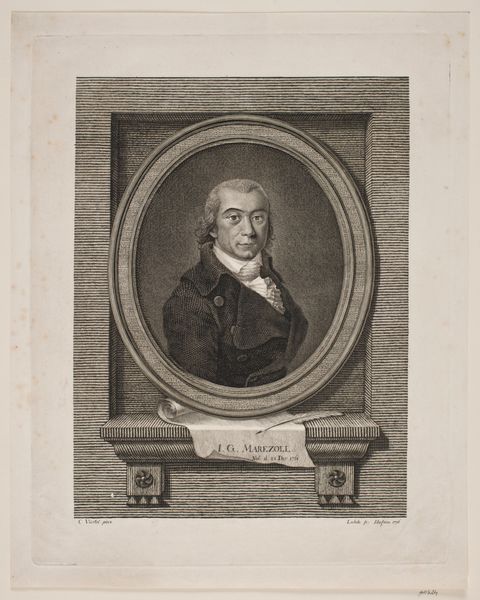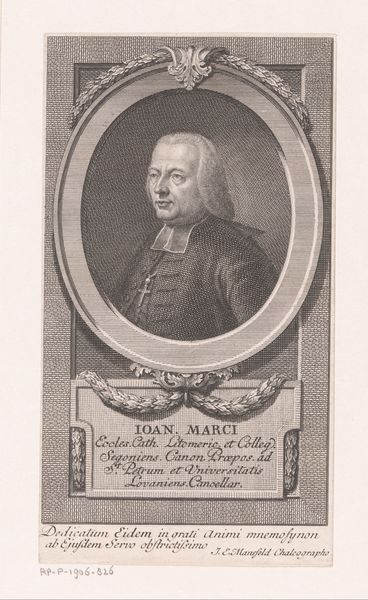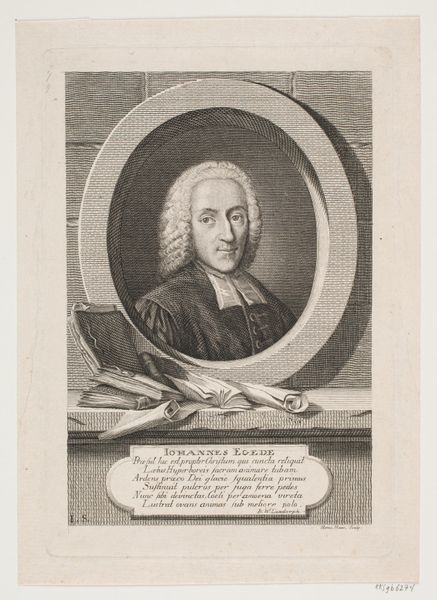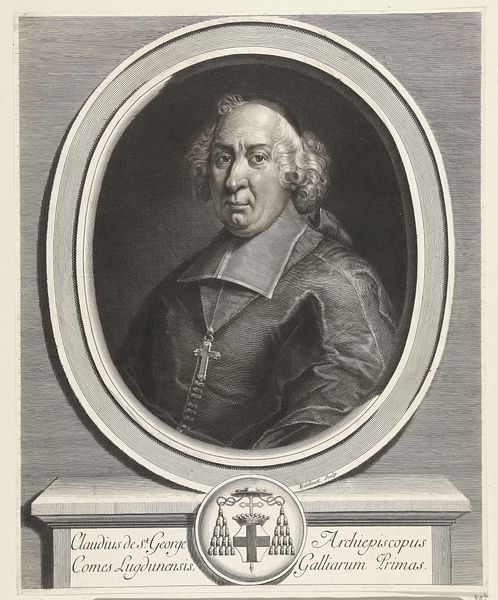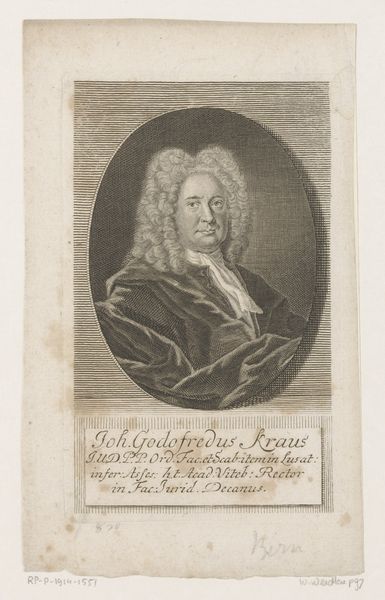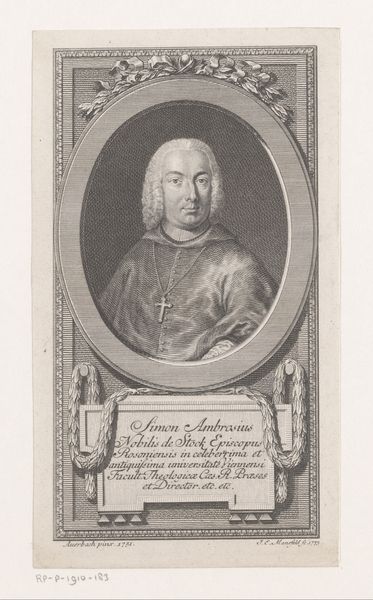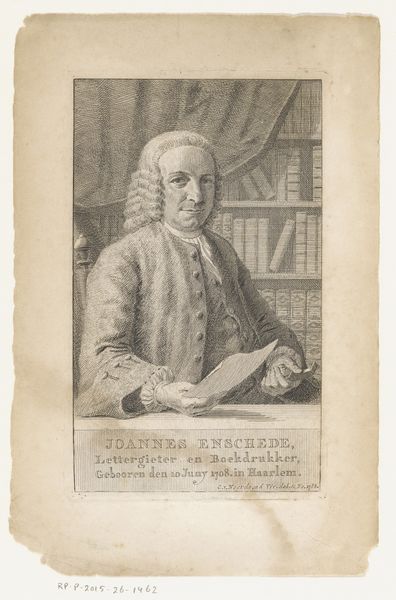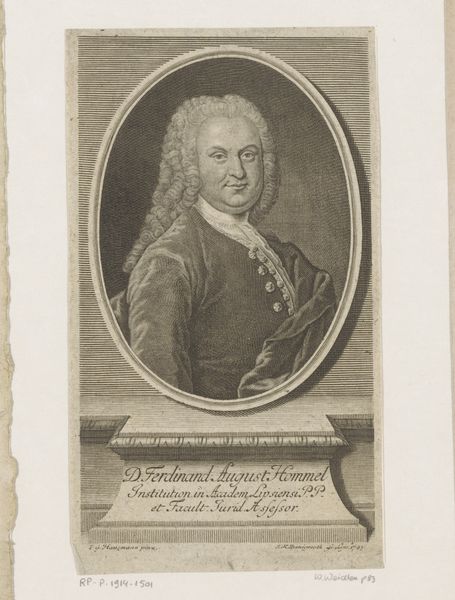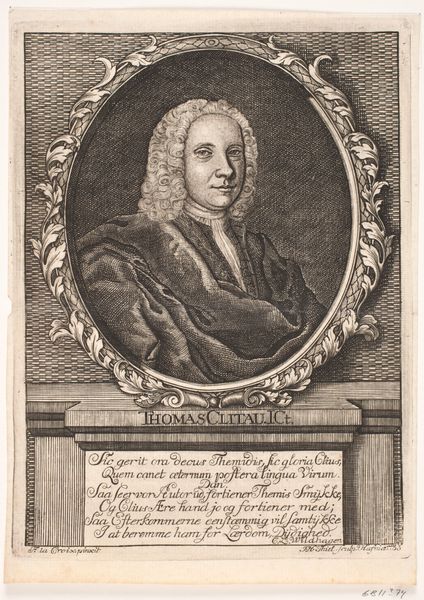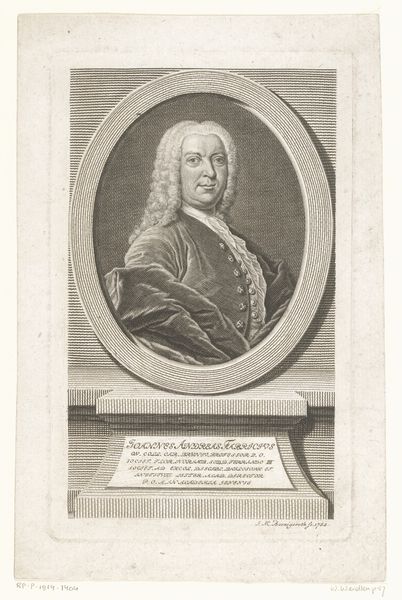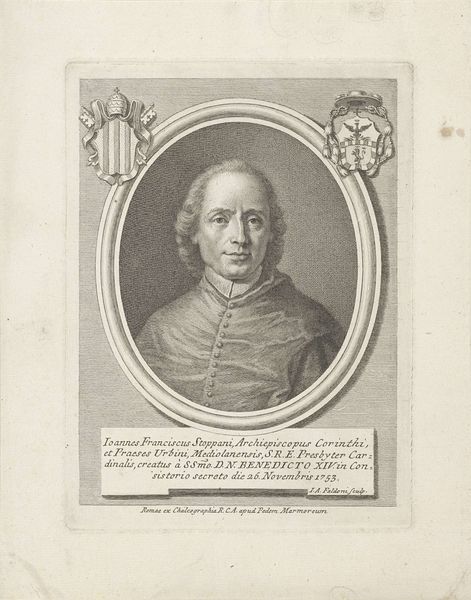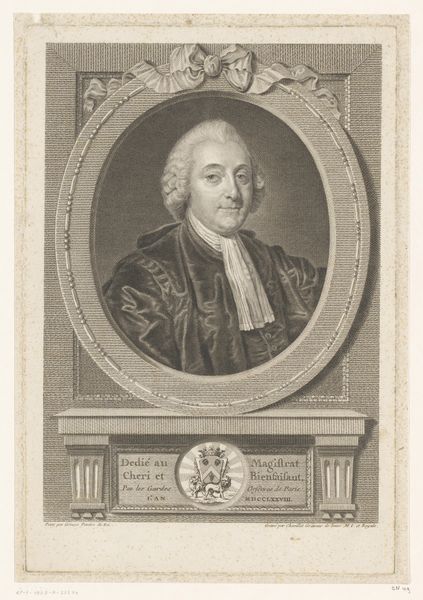
Dimensions: 190 mm (height) x 145 mm (width) (plademaal)
Johan Samuel Lymann's portrait of Claude Rosset, likely created around the 1760s, employs etching to construct a formal image contained within a geometric frame. The subject is presented in a circular enclosure, bordered by meticulously inscribed text, set above a rectangular plaque with additional inscriptions. The stark contrast of light and shadow, achieved through fine, controlled lines, defines Rosset’s features and clothing. Lymann uses the interplay of geometric shapes and linear precision to convey the Enlightenment values of order and reason. The portrait's structure, with its clear, delineated forms, mirrors the period's emphasis on rationality and categorization. The circular frame, reminiscent of classical medallions, gives the sitter prominence, while the inscription serves both as a border and a commentary, binding the image to language and meaning. Notice how the controlled etching technique, devoid of expressive flourishes, reinforces a sense of objectivity. This formal approach suggests a deliberate effort to capture the essence of the subject, while situating him within the intellectual currents of his time. As such, the work exists not merely as a depiction, but as an intellectual statement about representation and its cultural meanings.
Comments
No comments
Be the first to comment and join the conversation on the ultimate creative platform.
